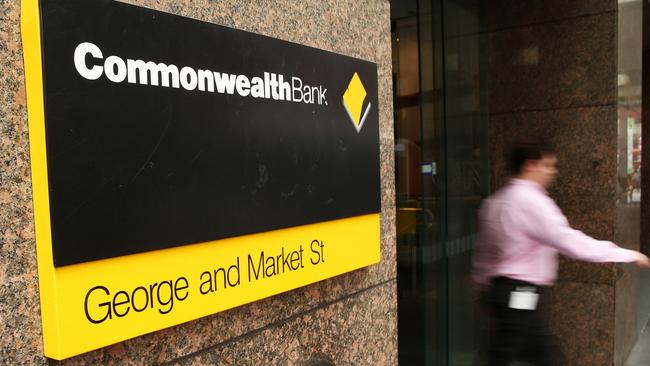
If it hurts getting just about zilch for your cash deposits, spare a thought for the banks — it turns out the flood of COVID-crisis cash pouring into the majors is looming as the sector’s next problem.
The nation’s biggest lender, Commonwealth Bank, took the novel approach of popping in a 12-year-old graph into its trading update this week. The bank wanted to show how it has decreased its dependence on overseas funding since the last time we had a major financial crisis back in 2008.
In June 2008 CBA had about 55 per cent of all its funding from deposits; today the figure has soared to 74 per cent.
But there were two things left out of the CBA slide that both savers and bank investors might consider for a moment.
In those post-crisis days savers were getting more than five times on their deposits than they get today.
To be precise, CBA explains that in October 2008 deposit rates were one year at 5.15 per cent and six months at 4.1 per cent.
After the GFC when the global “wholesale” banking system lurched from crisis to crisis, Australian bank shareholders — and regulators — were relieved to see the proportion of bank funding from mums and dads increase.
The problem in 2020 is that the extended increase is presenting a most unlikely problem: wholesale funding markets regularly offer even cheaper funding than the savings of the local population.
“It s not optimal,” says Hessel Verbeek, a KPMG strategy partner. “The wholesale markets are often cheaper; in other words the banks are facing higher funding costs then they possibly need to.
“Worse still, as the money has been pouring in the front door in the form of deposits, the money has not been going out the back door in the form of loans fast enough.
As KPMG put it in its recent bank results report: “The rate of growth in customer deposits of 8.7 per cent has significantly exceeded the ability of the majors to grow their lending assets. In comparison, total gross loan and advances decreased by 0.2 per cent.”
What happened?
In the wake of the COVID crisis Australian spending patterns literally became petrified. We stopped spending even with the biggest stimulus program in the history of the state. The savings rate nearly tripled from 7 per cent to almost 20 per cent.
And the bulk of those savings rolled into the big four — ANZ, CBA, NAB and Westpac.
CBA alone was pulling in around $1bn a month in what it terms household deposits from March to June this year.
And if you think that at least the deposits from mum and dad in the local banking system provide a stable source of funding — not so. Deposits, especially money left in transaction accounts, is the most volatile form of funding in the banking system. After all you can take your money out on a whim; if the bank has that money in a contract in the global banking system it is more secure.
And it just so happens that the dependence on transaction accounts has risen too in relative terms as more savers sidestep locking their money into fixed-term deposits where the returns are so similar it is hardly worth locking up the money. Bank transaction accounts pay almost zero while one-year fixed terms are less than 1 per cent, which does not even match inflation.
The recent Westpac results presentation showed that term deposits as a portion of the overall funding mix at the bank had shrunk dramatically.
Year on year the amount held by Westpac in term deposits actually fell by nearly 30 per cent, even though the overall dollar level of funding at the bank rose modestly.
CBA reported a first quarter 16 per cent drop in profits this week.
More Coverage
Read related topics:Coronavirus







